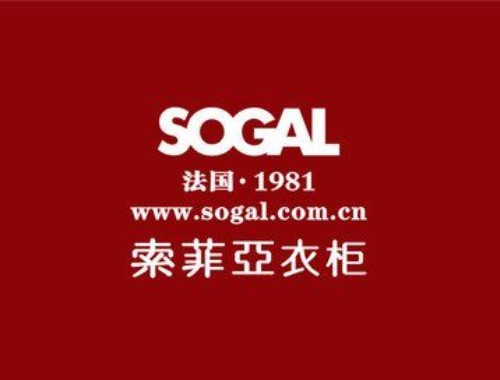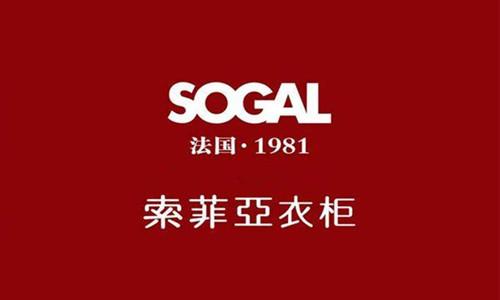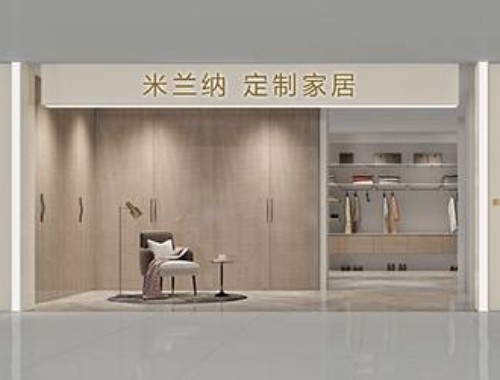Sogal' s commodity "dependence"
Source:laohucaijing.com
The former wardrobe boss has faced a growth bottleneck.
After four years of cooperation, Sogal agreed that Evergrande would use 40% of the equity in the joint venture to offset all the debts of both parties. A brief announcement reflected the dilemma of the industry.
The downturn of the real estate industry indirectly affects the prosperity of the upstream home furnishing industry. The former wardrobe boss Sogal has faced a growth bottleneck. The real estate industry is under pressure, product transformation is difficult, and the dealer game has accumulated multiple factors. How should Sogal break the situation?
A short five-page announcement caused market attention due to the involvement of Evergrande and Sogal, two leading players in their respective industries.
On the evening of July 20, Sogal announced that the company intends to acquire the 40% equity of Henan Evergrande Sogal Home Furnishing Co., Ltd. held by Henan China Evergrande Group Home Furnishing Industrial Park Co., Ltd. (hereinafter referred to as "Henan Evergrande Home Furnishing"). 160 million yuan. The shareholding structure shows that after the completion of the equity transfer, Sogal will hold 100% of the target company.
This also means that Sogal agreed that Evergrande will use 40% of the equity in the joint venture to offset all the debts of both parties.
In Sogal' s view, this acquisition "is conducive to improving the company' s overall management efficiency and business coordinated development, and better optimizing the allocation of resources within the company system." In words, Sogal' s intention to speed up is obvious.
In the past few years, due to over-reliance on distributors and bulk business, the whole package strategy has fluctuated. Sogal' s annual revenue growth rate has dropped from 40% at the beginning of its listing to 4%. The 2020 annual report shows that from the perspective of the wardrobe-related business, Sogal has been overtaken by Oppein, and has given up the position of the domestic wardrobe boss. The market value goal of 100 billion that was called out three years ago is now out of reach.
The pressure for growth is increasing day by day. What are the reasons and plans for Sogal to take back the equity of the subsidiary from Evergrande?
Sogal' s "dependence" on Evergrande
One is the wardrobe leader in the home furnishing industry, and the other is the benchmark leader in the real estate industry. In the past 7 years, Sogal has been closely related to Evergrande. Retrieving the cooperation information of the two through the search engine, the first information displayed is "Evergrande awards Sogal Excellent Supplier in 2019".
In fact, since 2014, the two parties have reached strategic cooperation intentions on many occasions. And Evergrande also listed Sogal as an important partner in external publicity.
On the commercial battlefield, this close relationship does not stop at fame. In order to strengthen business binding, in January 2017, Sogal and Henan Evergrande jointly established a home furnishing company, namely "Henan Evergrande Sogal Home Furnishing".
According to the agreement between the two parties, the company's registered capital of 100 million yuan, Sogal, will subscribe 60 million yuan in cash and hold 60% of the shares; Henan Evergrande will subscribe 40 million yuan in cash and hold 40% of the shares.
After the company is registered, the two parties will also invest in the project in phases, with a total investment of no more than 1.2 billion yuan. In the first phase of the plan, the two parties aimed at the Henan Lankao Home Project. Public information at that time showed that the project is expected to have a total investment of 400 million yuan, and the project will build an annual output of 340,000 sets of customized wardrobes and supporting household products.
According to Sogal' s supplement, the above-mentioned 340,000 sets of product production capacity will be mainly supplied to the buildings and areas under the Evergrande Group. Evergrande also includes sincerity-the procurement and sales system gives priority to purchasing products produced by joint ventures.
In Sogal' s view, “the joint venture project will simultaneously expand Sogal’ s production capacity and channels to help future performance.”
Financial data shows that Evergrande has always been an important customer of Sogal since 2018. In 2018, among the company' s top five accounts receivable customers grouped by arrears, the three subsidiaries of China Evergrande took the top three, accounting for 44.57% of the total accounts receivable.
In the 2020 annual report, although the above-mentioned proportion has dropped to 21.31%, the relevant subsidiary of Evergrande is still Sogal' s largest accounts receivable, with a corresponding amount of 188 million yuan.
Sogal couldn't sit still because the large amount of money was limited. On the evening of July 20, Sogal and Evergrande reached an agreement to acquire a 40% stake in Henan Evergrande Sogal Home Furnishing Co., Ltd. for a consideration of 160 million yuan.
At the same time, Sogal mentioned in the announcement that as of the date of the announcement, the total amount of creditor' s rights in business transactions between the two parties is also about 160 million yuan. As a result, both parties agreed that Evergrande will deal with the company' s claims by offsetting each other.
In short, Sogal decided to convert Evergrande’ s debt to equity and turn the joint venture company into a wholly-owned company to "go it alone."
Sogal' s determination came a little later. In the past three years, the pressure from the bulk of the real estate business, the contradictions between distributors, and the swing in product strategy have caused Sogal to be overtaken by the waves.
Bulk business is a double-edged sword
For home furnishing companies, the sales channels of products are relatively fixed. In addition to distributors, individual or group orders, large business agreements with downstream real estate developers provide home furnishing companies with huge incremental space.
And because of the high correlation between the home furnishing business and the real estate industry, the model of home furnishing companies providing bulk businesses to real estate developers has been followed up to this day. Sogal, who has been involved in bulk business as early as 2014, once tasted the sweetness and prompted it to build a factory with Evergrande in 2017.
The secondary market at that time also gave the above two "faces." After the news was released, Sogal' s stock price rose all the way, reaching another peak after being listed in 2011, and it was in the limelight for a while.
That year, Sogal' s operating income growth rate dropped from 36.02% in 2017 to 18.66%, which was almost cut in half.
In 2018, the financing of the real estate industry was tightened, and Vanke pointed out in its annual report that the entire industry has entered the silver era. The settlement cycle of the real estate industry is often as long as one to two years. Vanke’s prediction appeared at the beginning of 2019 and became an industry consensus in 2020. And this pressure has already shown signs as early as 2018.
Although bulk business can bring a huge business scale to home furnishing companies, but the local production has entered a downward cycle, and the pressure from the downstream real estate industry is transmitted to midstream home furnishing product suppliers along the supply chain.
Since 2018, keen suppliers have discovered that the payment cycle for real estate companies has been lengthened.
Statistics show that in 2018, real estate companies have seen a surge in financing using accounts between suppliers. Commercial invoices, ABS, and other models are emerging in an endless stream, which directly leads to suppliers’ accounts that can be settled within two months are generally postponed to as long as one year.
Reflected in Sogal, since the vigorous development of bulk business, its accounts receivable turnover days have doubled from 15.52 days in 2018 to 33.06 days in 2020.
The situation is getting worse and worse. Real estate developers find that the day is getting harder and harder, and the price limit on the floor and the land price have fallen one after another. In the land auction market, real estate investors who "spend like money" returned with their land, leaving the group to purchase and operate only the days when the cost was calculated with their fingers.
The prosperity of the upstream has been affected, and the downstream has the need to control costs. A person responsible for project costs in a listed real estate company revealed to LaohuCaijing that at the level of group procurement, the price of home furnishing companies that have signed large business contracts with real estate developers is about 3.5 to 40% off the market price, leaving home furnishing manufacturers' profits. There is not much space left.
In other words, if relying on bulk business, home furnishing companies can certainly digest the scale of production capacity. At the price, the level of corporate profitability will be sacrificed.
According to data, Sogal' s bulk business operating income has rapidly increased from 484 million yuan in 2018 to 1.510 billion yuan in 2020, with a compound annual growth rate of 76.28%.
In the first quarter of 2021, Sogal’ s operating income was approximately 1.76 billion yuan, an increase of 130.59% year-on-year, and an increase of 48.52% year-on-year; the net profit attributable to shareholders of listed companies was approximately 118 million yuan, an increase of 10.28% year-on-year.
Judging from the data in the first quarter, Sogal' s revenue and net profit growth rate has shown a difference of nearly 40%. In terms of gross profit margin, according to Choice data, Sogal' s gross profit margin has dropped from 38.17% to 36.56% since 2017.
In addition, a large number of transaction payments have been prolonged, which has also led to a huge quarterly outflow of Sogal’ s operating cash flow.
In the first quarter of 2021, Sogal’ s operating activities generated a net cash outflow of 661 million yuan, which was 6.74% more than the net outflow during the 2020 epidemic. In the announcement, Sogal' s tone was tactful, saying that it was due to "the rapid development of bulk business, and some bulk customers settled with commercial invoices, which resulted in the growth rate of operating cash flow being lower than the growth rate of cash outflow from operating activities."
Difficulties in strategic transformation
Another factor cannot be avoided in resuming Sogal' s dilemma in 2018-dealers.
Like most traditional consumer products, the home furnishing industry is deeply tied to the offline distribution system in the early stage of its development. The size of a company is positively related to the dealer network it can leverage.
After a battle in the first decade of the 21st century, Sogal has shown a leading posture since its listing, and is also deeply bound with dealers.
In the 2018 annual report, the revenue of Sogal' s top five customers was 1.439 billion yuan, accounting for 19.8% of total revenue; by 2020, the revenue of the top five customers was about 1.392 billion yuan, accounting for 16.66%. Another data also shows that in 2019, Sogal' s sales through distributors accounted for as much as 85.54%.
Such a large scale of distributors has achieved Sogal' s market position, and the risks have since been buried.
Since 2018, offline stores in the home furnishing industry have shown fatigue. According to statistics from Yihan, from the perspective of single-store revenue, in 2018, Sogal' s single-store revenue declined for the first time since the company' s listing, and the growth rate of single-store revenue fell sharply to a negative range.
In addition, according to the Research Report on the Development Status of the Building Materials and Home Furnishing Market in 2019, the main dilemma encountered by more than 70% of the stores is a significant decline in passenger flow, and more than 50% of the building materials and home furnishing stores have more than 10% of empty rents.
This is the case. If Sogal continues to maintain the speed of opening stores, it will still be able to maintain the growth trend despite the decline in single-store revenue. This is a growth logic similar to that of Haidilao.
However, the business demand for household products is far less than that of catering. According to the analysis of Yihan, as of 2020, the number of wardrobe stores in Sogal is estimated to be 3119, while there are 2856 county-level administrative divisions in China. The overall store layout has basically ended, and the company' s wardrobe business has reached the stage of considering endogenous growth.
For Sogal, if reforms are not pursued, it is only a matter of time before revenue peaks.
Sogal, who has been cultivating the industry for many years, is not indifferent. As early as 2018, Sogal encouraged distributors to implement packages in order to promote sales. However, some distributors did not implement this policy for their own interests, which led to the implementation of the discount policy at the company headquarters.
The dealers got bigger and bigger, which in turn became a constraint for Sogal. From a data level, you can get a glimpse of one or two: In the home furnishing industry, the cabinet business is often the core business of integrating various sectors, and this part of the business is Sogal' s weak point.
Since Sogal started from a wardrobe, its brand power in the cabinets and wooden doors category is relatively weak. Although Sogal has a strong distributor channel, it has always been difficult to promote the integration channel, so that it was surpassed by latecomers such as Oppein. The road of distributors is difficult to advance, and the bulk channel business has become the savior of Sogal' s business growth.
During the three years from 2018 to 2020, Sogal' s bulk business sales accounted for total revenue increased from 6.62% to 18.08%, and it was the main contributor to business growth in recent years. In 2020, Sogal' s cabinet business revenue increased by 42.26% year-on-year compared to 2019.
However, the real estate boom is not going to go back to the past, and the price of large transactions that Sogal relies on is also significant. Sogal' s gross profit margin of cabinets has fallen from 27.98% in 2018 to 22.67% in 2020, and gross profit has fallen by 5 percentage points.
The source has been identified in this article. All copyrights belong to the original anthor. In case of infringement, please contact us.
-

Sogal has reached a cooperation with Mingjiang Decoration to further develop the whole-decoration market!
-

Wang Bing, Executive President of Sogal---Secret of Sogal's Digital Road
-

China: Sogal Home and Xingyi Decoration signed a cooperation agreement
-

SOGAL officially launched the Internet light fashion brand MLANLA

 沪公网安备31010402003309号
沪公网安备31010402003309号



